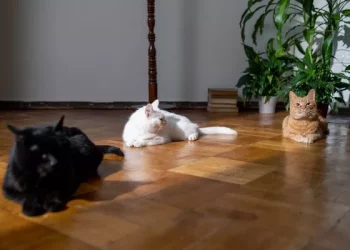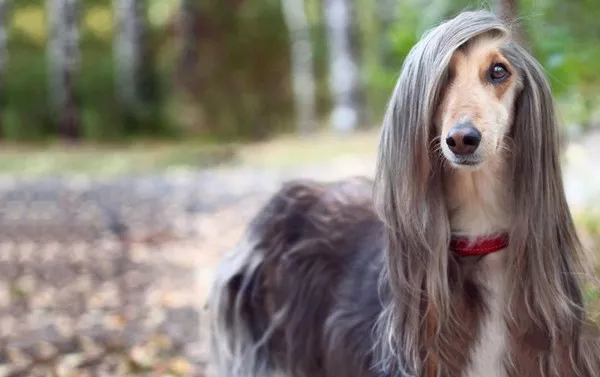The allure of a kitten is hard to resist. Their playful antics, soft fur, and tiny purrs can captivate anyone. Among the various breeds of cats, the Devon Rex stands out not only for its unique appearance but also for its quirky personality. One common question that arises among prospective and current Devon Rex owners is whether Devon Rex kittens change color as they grow. This article delves into the topic of color changes in Devon Rex kittens, exploring the genetic factors, development stages, and other relevant considerations.
1. Understanding the Devon Rex Breed
History of the Devon Rex
The Devon Rex is a relatively new breed, first emerging in the 1960s in Devon, England. This breed was developed from a natural mutation in a domestic cat, leading to its distinct features: short, curly fur, large ears, and an elf-like appearance. The breed gained popularity due to its playful demeanor and affectionate nature, making it a favored choice among cat lovers.
Physical Characteristics
Devon Rex cats are characterized by their:
Wavy Coat: Unlike other cats, the Devon Rex has a short, curly coat that requires minimal grooming.
Large Ears: Their oversized ears give them an alert and playful expression.
Sleek Body: They possess a slender, muscular body, making them agile and playful.
The coat colors and patterns of Devon Rex cats are diverse, contributing to the question of whether their colors change over time.
2. Genetic Factors Influencing Color
Feline Genetics
The coloration of a cat is determined by its genetics, specifically the genes that control the distribution and amount of pigments in the fur. These genes are responsible for a range of colors and patterns, including solid, tabby, bicolor, and pointed varieties.
Color Genes in Devon Rex
The Devon Rex can exhibit various colors due to the following genes:
Agouti Gene: This gene influences whether a cat’s fur will have a tabby pattern or be solid in color.
Dilution Gene: This gene can lighten a cat’s color, resulting in shades such as blue (gray) instead of black.
White Spotting Gene: This gene creates white patches or completely white coats in some cats.
Temperature Sensitivity of Colors
One interesting aspect of feline color genetics is temperature sensitivity. Some breeds, particularly those with pointed coloration (such as Siamese), exhibit different colors based on temperature. While the Devon Rex is not a pointed breed, understanding temperature sensitivity can provide insight into how and why colors may appear to change.
3. Development Stages of Devon Rex Kittens
Neonatal Stage (0-2 Weeks)
In the first two weeks of life, kittens are born with a coat that may appear dull and less vibrant than it will later become. The pigmentation is often minimal, and the coat may change as they grow and develop.
Transitional Stage (2-4 Weeks)
As kittens begin to grow, their fur will start to develop its unique texture and color. During this stage, you may notice some color changes, especially in the pattern. This is due to the development of hair follicles and pigment production.
Socialization Stage (4-9 Weeks)
By this stage, kittens are more active and their personalities start to emerge. The fur may continue to change, with the true color beginning to reveal itself. Patterns become more defined, and any color changes will become more noticeable.
Adolescence (9-12 Months)
As the kitten matures, its coat may still undergo changes. By this time, most of the color and pattern should be established, but some variations can still occur as the cat grows into adulthood.
4. Common Color Changes in Devon Rex Kittens
Expected Color Variations
Devon Rex kittens may experience several types of color changes:
Lightening or Darkening: As the kitten grows, it may appear to lighten or darken in color. For example, a black kitten might develop a more muted shade.
Pattern Definition: Patterns such as tabby stripes or spots may become more pronounced or blend together as the kitten matures.
Coat Texture Changes: The unique curly coat of the Devon Rex may also affect how color is perceived. A more tightly curled coat can make colors look different than they would on a straight-haired cat.
Specific Color Changes
While not exhaustive, here are some common color changes observed in Devon Rex kittens:
Black to Charcoal: Kittens with a black coat may develop a charcoal hue as they mature.
Brown to Cinnamon: Brown-colored kittens might take on a warmer, cinnamon tone.
Seal Point Changes: Kittens that have seal points (darker extremities) may see these colors become more pronounced with age.
5. Environmental Factors
Light Exposure
The environment in which a cat lives can influence how its color is perceived. For example, direct sunlight can lighten a cat’s coat, while a darker environment may enhance deeper shades.
Nutrition
A cat’s diet can impact its overall health, including its coat condition. A balanced diet rich in vitamins and minerals can contribute to a vibrant coat, while poor nutrition may lead to a dull appearance.
Grooming Practices
Regular grooming not only maintains a cat’s coat but also can affect its appearance. Regular brushing can help remove dead hair and promote healthy hair growth, allowing colors to shine through.
6. Health Considerations
Skin and Coat Health
Changes in color may also be linked to health issues. For instance, certain skin conditions can alter pigmentation. Keeping an eye on any sudden or dramatic changes in color can be vital in identifying potential health problems.
Allergies
Allergies can impact a cat’s coat, leading to dullness or changes in color. Identifying and treating any allergies can help maintain a kitten’s vibrant appearance.
Hormonal Changes
Hormonal fluctuations can also affect a cat’s coat. Spaying or neutering may lead to changes in coat quality and color, which can sometimes be noticeable.
Conclusion
The Devon Rex is a fascinating breed, not only because of its physical characteristics and playful nature but also due to the intriguing aspects of its coloration. While it is natural for Devon Rex kittens to experience changes in color as they grow, the degree of change can vary based on genetics, environment, and health.
As a potential or current owner, it is essential to understand these factors and how they influence your kitten’s appearance. Regular veterinary check-ups, a balanced diet, and proper grooming will help ensure that your Devon Rex maintains a healthy, vibrant coat throughout its life.
In summary, while Devon Rex kittens may change color, these transformations are a normal part of their development. With time, care, and attention, these charming kittens will grow into beautiful adult cats, displaying the unique coloration and patterns that make the Devon Rex such a beloved breed.
Related Topics:























